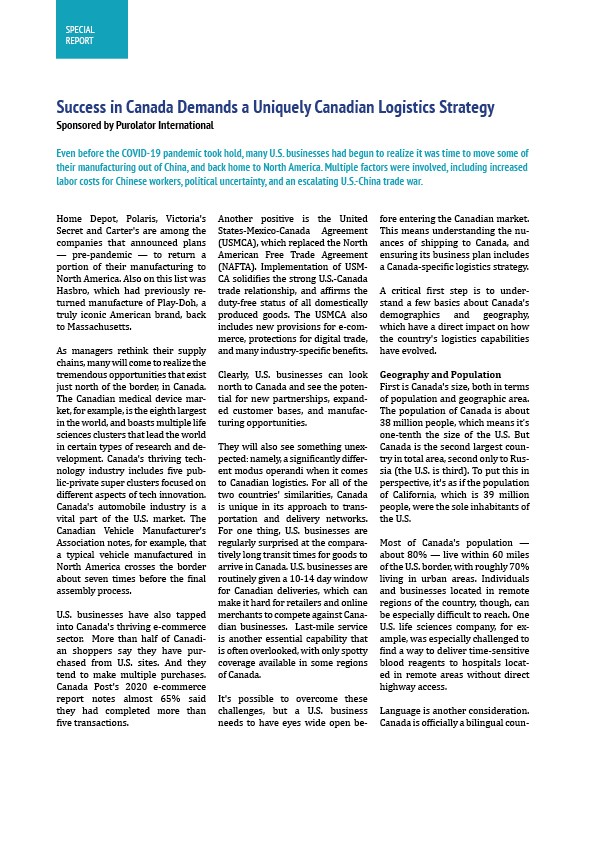Even before the COVID-19 pandemic took hold, many U.S. businesses had begun to realize it was time to move some of their manufacturing out of China, and back home to North America. Multiple factors were involved, including increased labor costs for Chinese workers, political uncertainty, and an escalating U.S.-China trade war.
Home Depot, Polaris, Victoria’s Secret and Carter’s are among the companies that announced plans — pre-pandemic — to return a portion of their manufacturing to North America. Also on this list was Hasbro, which had previously returned manufacture of Play-Doh, a truly iconic American brand, back to Massachusetts.
As managers rethink their supply chains, many will come to realize the tremendous opportunities that exist just north of the border, in Canada. The Canadian medical device market, for example, is the eighth largest in the world, and boasts multiple life sciences clusters that lead the world in certain types of research and development. Canada’s thriving technology industry includes five public-private super clusters focused on different aspects of tech innovation. Canada’s automobile industry is a vital part of the U.S. market. The Canadian Vehicle Manufacturer’s Association notes, for example, that a typical vehicle manufactured in North America crosses the border about seven times before the final assembly process.
There’s a lot to consider in building a Canadian logistics strategy. But whether a business is new to that market or has an established presence, the challenges remain the same. And so do the solutions. Read Success in Canada Demands a Uniquely Canadian Logistics Strategy to learn more.




